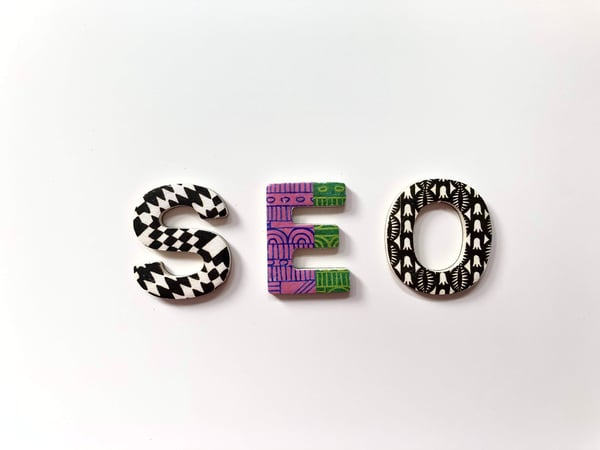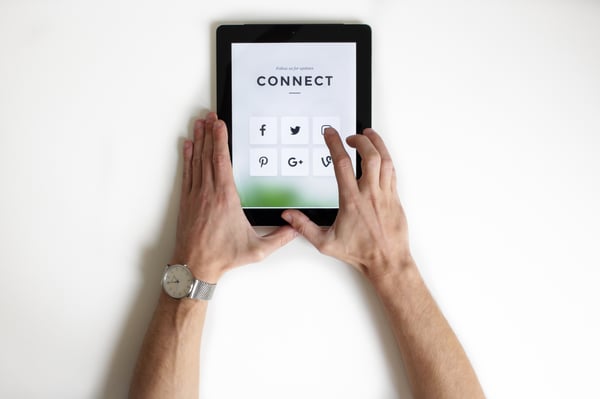Five Inbound Marketing Channels to Utilise
What is inbound marketing?
Invented by Hubspot in 2005, inbound marketing is a marketing strategy that is focused on attracting customers to your business through content. It’s an alternative to the traditional outbound marketing strategy, which focuses on interrupting potential customers with a direct approach and advertisement.
The idea behind inbound marketing is that people will naturally want to find out more about your business after being provided valuable, relevant content. This approach can be much more cost-effective than traditional advertising and it tends to generate higher quality leads, as it entices customers with content they find engaging and useful.
The success of an inbound marketing strategy relies heavily on the quality of the content created for it. The more informative and interesting you make your content, the more likely you are to convert prospects into customers.
Inbound marketing content can be in the form of blogs, white papers, videos, podcasts, and social media posts.
Benefits of Inbound Marketing
Inbound marketing is a customer-centric approach to marketing and has many benefits for both businesses and customers.
By focusing on creating high-quality content, businesses are able to build meaningful relationships with customers, leading to a more personalised experience for the customer, which results in a higher conversion rate for the company. HubSpot suggests that content such as blog articles, content offers, and social media are particularly effective as they provide value to the customers. A study conducted by Evergage found that a staggering 99% of marketers stated that personalisation helps advance customer relationships, with a further 78% of marketers claiming that it has a ‘strong’ or ‘extremely strong impact.
Inbound marketing also enables companies to track their success by using analytics tools, so they can gain insights into which type of content engages customers most, and serve them accordingly.
How to Choose Inbound Marketing Channels for your Business
The way in which we communicate with customers is changing, we now have more tools to reach out to our audience than ever before. But, with the advent of so many inbound channels, it can be hard to pick the right one for your goals.
To find the most effective inbound marketing channel to reach potential customers, the first step is to identify the channels your target audience spends time on. From here, you can then find out the best way to reach them by pinpointing which type of content your target audience interacts with the most.
Inbound Marketing Channels
Email: Email marketing is an effective inbound marketing channel because most people check their email regularly, it allows businesses to reach and address a large audience in a short amount of time.
Despite email marketing being a traditional marketing practice, it has proven to be one of the most successful channels to engage potential customers, and Intuit’s $12B acquisition of Mail Chimp is further proof that its email marketing is very much alive.
There are many ways to use email marketing for your inbound marketing strategy, but the general idea is to serve valuable content to your subscribers, for instance, via a Newsletter.
You can use email marketing as a way to nurture leads who have already shown interest in your business. This will enable you to build relationships with your prospects and eventually turn them into customers.
Social Media: Social media inbound marketing combines traditional inbound marketing principles with the benefits of social media channels. With this strategy, businesses can use social media as a distribution channel to promote their content and drive traffic back to their site.
Inbound marketing often relies on social media as a hub for content distribution. The main goal of social media inbound marketing is to create and nurture a community around your brand that will be interested in what you have to offer. This community will be more likely to purchase from you.
Businesses can use their social accounts to:
- Create and share interesting content to engage potential customers
- Share useful information to build loyalty
- Provide exclusive discounts or offers to entice potential customers to use their product or service
- Answer customer questions to build legitimacy and trust

By Jeremy Bezanger
Blogs: Blogs are a powerful tool for inbound marketing, as they can be used to generate leads and reach out to customers. They are also an excellent way to build brand awareness because blogging is still one of the best ways to connect with your audiences on a personal level.
There are many ways that you can use blogs for inbound marketing, such as:
- Generating educational blog post series that teaches people about a topic related to your business. This is a great way to establish yourself as an expert in your field, and it will also help people find you when they have questions about this topic.
- Producing blog posts that cover your business's mission statement and values. This will help you to connect with people on a more emotional level, and it’s also an effective method to promote yourself as a business owner.
- Sharing an article on a relevant issue in the industry and creating a blog post about solutions to address the problem, potentially explaining how your product or service can be used to resolve an issue so that you can educate the audience, as well as build trust.
- Creating blog posts surrounding customer reviews and case studies, so that you can establish an online presence that is credible and engaging.
 By Bram Naus
By Bram Naus
SEO: Search engine optimisation (SEO) is an important part of inbound marketing because it allows businesses to rank higher in organic rankings (VS paid placements) on search engines and attract new customers in a more sustainable way. SEO is interlinked with inbound marketing as it helps to create content that will allow people to find your company online more easily.
With the help of SEO, you can create a website that is not only informative but also discoverable.
 By Merakist
By Merakist
Landing Pages: A landing page is responsible for the first impression of any business. It is the place where you can convert a visitor into a customer.
A landing page should be designed in such a way that it has all the information about your product and services, along with an easy-to-understand call to action.
Landing pages are a critical component of inbound marketing, as it’s the first point of touch with a potential customer.
The following are some tips for creating an effective landing page:
- Make sure that your landing page has a clear call to action
- include a headline that clearly communicates the offer
- Explain how your product or service will solve their problem
- Include testimonials, reviews and case studies as social proof
Need help with choosing the right inbound marketing channels for your business? Get in touch with the team at Yay!Starter who’ll help you to get started with inbound.




.jpg?width=600&name=stephen-phillips-hostreviews-co-uk-3Mhgvrk4tjM-unsplash%20(1).jpg)




